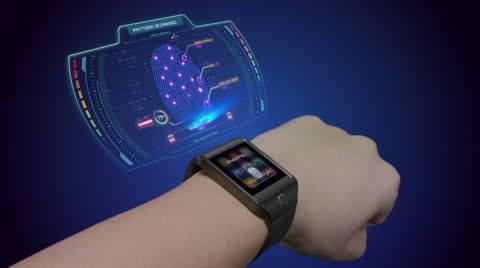The very concept of money is undergoing a profound and irreversible transformation. For centuries, the exchange of value has been a physical, tangible process—coins, paper notes, plastic cards. But we are now at the inflection point of a new era, one where transactions are becoming invisible, intelligent, and inextricably woven into the fabric of our digital lives. The future of payments is not just about faster cards or slicker apps; it’s about the complete dissolution of the payment process itself into a seamless, secure, and autonomous background utility.
This evolution is being driven by a perfect storm of technological innovation and a seismic shift in consumer expectations. We have moved beyond simply digitizing analog methods. We are building a new financial infrastructure from the ground up, powered by artificial intelligence, biometrics, and decentralized networks. The demand is no longer just for convenience, but for hyper-personalized, context-aware experiences that anticipate our needs and operate with a level of security that was once the domain of science fiction.
This definitive guide explores the forces architecting our financial future. We will dissect the foundational technologies that are making this revolution possible, analyze the transformative trends that are redefining our relationship with money, and look ahead to a world where the act of “paying” is a forgotten friction of the past. Prepare for a deep dive into the intelligent, embedded, and invisible payment ecosystem that is not on the horizon—it’s already here.
A. The Technological Bedrock: Engines of the New Economy
The payment revolution is being built upon a handful of powerful, interconnected technologies. Each one represents a paradigm shift on its own; together, they are creating a system that is exponentially more powerful and efficient than what it replaces.
1. Artificial Intelligence (AI) and Machine Learning (ML): The Smart Guardian
AI is the central nervous system of modern finance, working silently in the background to make payments safer and smarter. Its most critical application is in real-time fraud detection and prevention. Traditional fraud systems rely on static, rule-based flags that are easily circumvented by sophisticated criminals. AI, in contrast, uses dynamic machine learning models to analyze thousands of data points for every single transaction in milliseconds. It considers your historical spending patterns, geolocation data, device ID, time of day, and the merchant’s profile to create a complex, holistic risk score. This allows financial institutions to stop fraudulent transactions with surgical precision, dramatically reducing losses while minimizing the “false positives” that infuriate legitimate customers.
Beyond security, AI is the engine of hyper-personalization. It enables:
- Dynamic Credit: AI algorithms can instantly assess risk and offer personalized “Buy Now, Pay Later” (BNPL) options or short-term credit at the point of sale.
- Personalized Loyalty: Instead of generic rewards, AI can offer consumers loyalty points or discounts on products they actually want, based on their purchasing history.
- Predictive Banking: Financial apps can use AI to analyze spending habits and provide proactive advice, like warning of a potential overdraft or suggesting a better savings strategy.
2. Biometric Authentication: The Unbreachable Identity
The era of the password—and its inherent vulnerabilities—is coming to a close. Biometric authentication, which uses your unique biological characteristics as the ultimate key, is becoming the new gold standard for payment security. It offers a combination of convenience and safety that passwords could never achieve. The key modalities include:
- Physiological Biometrics: This category includes fingerprint scanning and facial recognition, which are already standard on most smartphones and used to authorize mobile wallet payments. Other forms include iris scanning and even vein pattern recognition for ultra-high-security applications.
- Behavioral Biometrics: This is a more subtle but equally powerful layer of security. It analyzes the unique patterns in how you interact with your devices. This includes your typing cadence, the speed and pressure of your swipes on a screen, how you hold your phone, and even your gait as you walk. These patterns create a continuous, passive authentication model that can detect if a device has been stolen and is being used by someone else, even if they have the PIN.
3. Blockchain, CBDCs, and the New Financial Rails
While Bitcoin and other volatile cryptocurrencies capture headlines, the underlying blockchain technology and its derivatives are poised to rewire the very infrastructure of finance. The focus is shifting towards more stable and scalable applications.
- Cross-Border Payments: The traditional correspondent banking system for international transfers is notoriously slow, opaque, and expensive. Blockchain-based solutions and stablecoins (digital currencies pegged to a stable asset like the US dollar) can bypass this legacy system, enabling near-instant, low-cost international payments with full transparency for all parties.
- Central Bank Digital Currencies (CBDCs): Perhaps the most significant development is the global race to develop CBDCs. A CBDC is a digital form of a country’s fiat currency and a direct liability of the central bank. Dozens of nations are in advanced stages of development or pilot programs. CBDCs promise to increase the efficiency and resilience of a country’s payment system, promote financial inclusion for the unbanked, and give central banks new tools for implementing monetary policy. The eventual launch of a major CBDC, like a digital dollar or euro, will be a watershed moment in the history of money.
B. The Experiential Revolution: How We Will Pay

These core technologies are enabling a new wave of payment experiences that are more intuitive, integrated, and frictionless than ever before.
1. From Contactless to Invisible: The Disappearing Transaction
The pandemic massively accelerated the adoption of contactless payments. “Tap-to-pay” cards and mobile wallets like Apple Pay and Google Pay, which use Near Field Communication (NFC) technology, became the default for their speed and hygiene. This trend is now evolving into the concept of invisible or ambient commerce.
The prime example is the Amazon Go model, where a customer can walk into a store, take items off the shelf, and simply walk out. A sophisticated system of cameras, sensors, and AI handles the entire transaction in the background. This “just walk out” technology is the pinnacle of frictionless commerce. The same principle applies to services like Uber or Lyft, where the payment is an integrated and forgotten part of the experience. This model is expanding, aiming to remove the cognitive load of the payment act from countless daily interactions.
2. Embedded Finance: Payments in Everything
Payments are breaking out of the confines of dedicated banking apps. Embedded finance refers to the integration of financial services directly into non-financial products and platforms. This is made possible by the API (Application Programming Interface) economy, which allows disparate software systems to communicate seamlessly.
The results are everywhere:
- In-App Payments: You can now order, pay, and tip from your table at a restaurant through a QR code without ever waiting for a bill.
- Super-Apps: In many parts of the world, a single “super-app” like WeChat or Grab combines messaging, social media, transportation, food delivery, and a complete payment ecosystem.
- Internet of Things (IoT) Payments: Your connected car will soon be able to pay for fuel, parking, and tolls automatically. Your smart refrigerator will re-order milk when you’re low and pay for it from your linked account. Payments are becoming a native function of the connected devices that surround us.
3. Real-Time Payments (RTP): The End of “Pending”
In an instant, on-demand world, the concept of waiting 3-5 business days for a transaction to clear is becoming obsolete. Real-Time Payment (RTP) networks are the new standard for payment infrastructure. These systems allow for the instant transfer and settlement of funds, 24/7/365.
The impact is enormous. Gig economy workers can receive their earnings the moment a job is finished. Businesses can dramatically improve their cash flow management. Insurance companies can pay out claims instantly. Friends can split a dinner bill and have the money in their accounts before they’ve even left the restaurant. RTP is the foundational layer upon which a new generation of instant financial services will be built.
The Dawn of Autonomous Finance

The future of digital payments is intelligent, integrated, and ultimately, invisible. We are moving away from active, deliberate payment events and towards a state of autonomous finance, where value is exchanged securely and efficiently in the background of our lives. Our identity will be our wallet, verified passively by our unique biometrics. Our devices will be our agents, empowered by AI to conduct transactions on our behalf in the most optimal way.
This new world promises unprecedented convenience and economic efficiency. It also presents critical challenges around data privacy, algorithmic bias, and cybersecurity that must be addressed with thoughtful regulation and robust design. The journey is complex, but the destination is clear: a global financial ecosystem that is more accessible, more intelligent, and more seamlessly integrated with the human experience than ever before.












